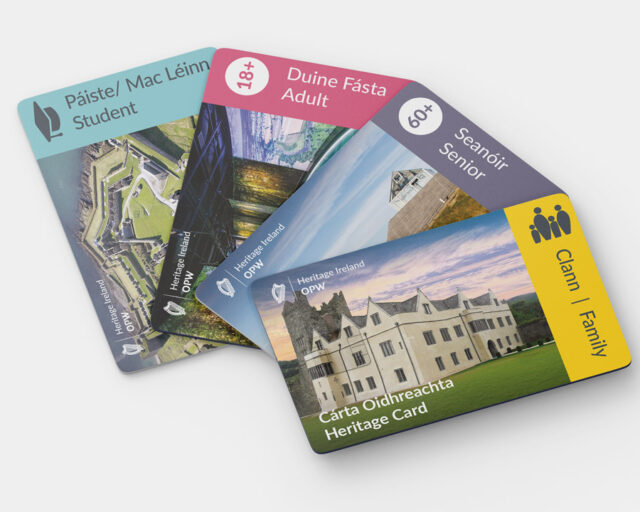Notice
Pallas Castle is a state-owned National Monument in the care of the Office of Public Works
*For External Viewing Only, Internal Access is Not Permitted*
WARNING: It should be noted that these sites are unguided and a level of care and caution should be maintained during all stages of your visit. The Office Of Public Works (OPW) will not be held responsible for any damages, injuries, or losses that occur
Pallas Castle
Pallas Castle is located below the village of Tynagh off the small R351 road, 11.5 kilometres (c.7 miles) North West of Portumna and 18.3 kilometres (c.11.3 miles) south east of Loughrea in Co. Galway. Although not signposted at the turn off for it, and taking into consideration that it is located at the end of a long grass-covered laneway that was originally the entrance drive to the Pallas estate, it is well worth seeking out. It is one of the largest, most elaborate and best preserved tower houses in Ireland and represents one of the finest examples of a late 15th and early 16th century fortified residence in the country.
Pallas was originally a Burke family stronghold. In 1574 it was owned by Jonyck FitzThomas Burke, who had engaged in several rebellious actions against Queen Elizabeth I. Having been captured and executed by Sir Nicholas Malby, the governor of Connacht, his confiscated lands were granted to loyal English settlers. Despite this, the family managed to recover Pallas, which they held until the 1649 Cromwellian conquest of Ireland.
In 1654 Pallas was given to the Cromwellian supporter Richard Nugent (c.1622-c.1683), whose father, also Richard Nugent (1583-c.1641), then as the 4th Baron Delvin, had been elevated in 1621, under James VI & I, to the peerage of England as the first Earl of Westmeath. Having submitted to Parliament under the Articles of Kilkenny in 1652 but exempted from Oliver Cromwell's Act of Settlement, he was transplanted to Connaught in 1656.
The site of Pallas Castle is enclosed by an impressively thick and intact bawn wall that measures 40 metres by 35 metres. At its east-facing entrance is a two-storey gatehouse and two circular turrets at both ends of the crenelated facade. Above the gatehouse entrance is a defensive machicolation or murder hole. Inside the gatehouse, a fireplace and a garderobe still exist on the upper floor. Embedded above the gatehouse entrance is an early 18th century armorial carving, dated to 1719, bearing the impaled arms and the motto of a member of the Nugent family.
The inner facades of the bawn wall feature crenelated parapets and elevated walkways reached by way of flights of stone steps. At either end of the west-facing wall is a square bartizan turret.
The impressively solid tower house measures 16 metres by 10 metres at the base and is 20 metres in height. It is accessed through a round-headed doorway in its eastern face. Inside, a spiral staircase connects all of its five storeys and leads to several mural chambers that were, most likely, used as closets or latrines. The staircase also leads to the roof, which has the remains of four bartizans at each corner. A murder hole, or machicolation, is also located here, directly above the main entrance. Here also are the remains of an attic room with gabled-ended chimney stacks.
On each floor of the tower house is a large room and a good fireplace, the roof of the third storey is vaulted. Narrow mullioned windows, framed in arches, can be seen on the fourth floor, and elegant arrow slits remain at different levels in each of the tower’s four facades.
Next to the tower house is the gable end of a large three-storey-over-basement 17th century house that was added by the Nugent family. It has its own basement-level entrance way, and has mullioned windows and a chimney stack. In the northwest corner is a malt house that was built by the Nugent’s in the 18th century. This building has a vaulted ground floor and a loft above it.
Protect our Past - Click here to read about the importance of protecting our country’s unique heritage sites
This national monument is protected in accordance with the National Monuments Acts 1930 to 2014
Gallery
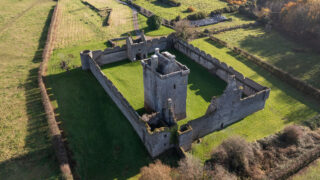
Aerial view of Pallas Castle Credit Photographic Archive, National Monuments Service, Government of Ireland 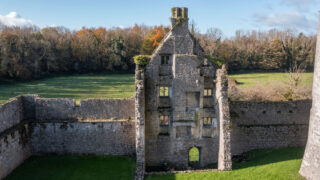
The ruins of Pallas Castle Credit Photographic Archive, National Monuments Service, Government of Ireland 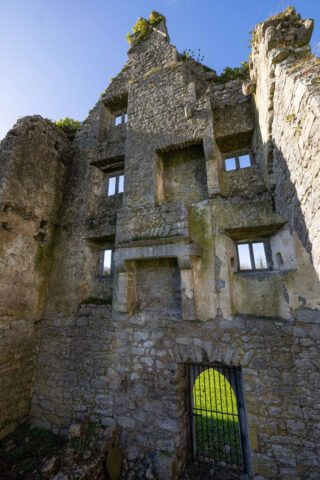
The towering ruins of Pallas Castle Credit Photographic Archive, National Monuments Service, Government of Ireland 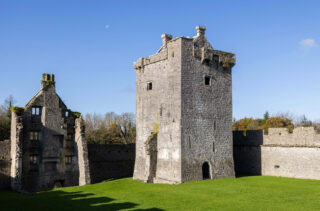
Pallas Castle tower house Credit Photographic Archive, National Monuments Service, Government of Ireland 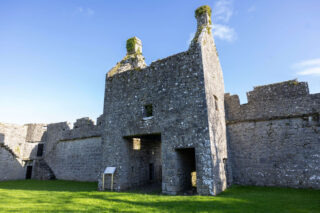
The impressive structure of Pallas Castle Credit Photographic Archive, National Monuments Service, Government of Ireland 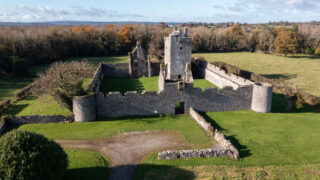
The stunning landscape surrounding Pallas Castle Credit Photographic Archive, National Monuments Service, Government of Ireland
Nearby sites to visit
Portumna Castle and Gardens
Seventeenth-century splendour on the shores of Lough Derg
Approx. 10.5 km from Pallas Castle
Athenry Castle
An emblem of Norman lordship
Approx. 31.9 km from Pallas Castle
Clonmacnoise Monastic Site
A spectacular monastery on the banks of the river Shannon
Approx. 33.5 km from Pallas Castle
Roscrea Castle, Gardens and Damer House/Black Mills
A place of medieval might and eighteenth-century elegance
Approx. 42.3 km from Pallas Castle
Ennis Friary
Admire some exquisite Renaissance carvings
Approx. 51.9 km from Pallas Castle
Roscommon Castle-South West Tower
A dramatic and imposing thirteenth Century Norman Castle
Approx. 57.5 km from Pallas Castle

